|
















|


|
Preamble
 The
question The
question  About
Cook About
Cook  Cook's
Return : Cook's
Return :
comment and impressions  About
Peary About
Peary  Elements of
Elements of
logistics and organisation  Important
reflections about observed or Important
reflections about observed or
estimated positions
 Conclusion Conclusion
 Some bibliographical landmarks
Some bibliographical landmarks
 About
the author of the article About
the author of the article
Preamble
This
is a controversy provoked by the claim made on 1 September 1909
by a doctor, Frederick Cook, , that he had reached the North Pole
on 21 April 1908; a claim followed, a few days later (on 6 September),
by one from an engineer, Robert Edwin Peary, who asserted that he
had been the first to reach the Pole - on 05/06 April 1909.
On
08 April, Peary, without having spoken to Cook, and without having
been able to familiarise himself with the latter's story, sent a
first telegram to United Press, saying: Cook's story shouldn't be
taken too seriously", and a second message to the New York
Times: "He was not at the Pole on 21 April 1908, nor
at any other time. He has simply misled the public."

Frederick
A. Cook |
En
In a somewhat different style, Cook declared, on the subject of
Peary's feat: "That's good news. I hope that Peary arrived
at the Pole. His observations and reports about the region will
confirm my own". And to the New York Herald : "Please
be kind enough to convey my cordial congratulations to Mr. Peary
on his success".
Peary's
two messages to the press had a domino effect that he undoubtedly
did not realise would provoke, at the end of the day, something
of a media feeding frenzy, both concerning Cook, and, as a knock-on
effect, concerning himself.
Relations
between these two "claimants" were quickly poisoned, particularly
between their respective supporters who, some 93 years later, are
still acting as unconditional defenders of their idol.
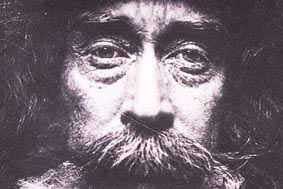
Robert
Edwin Peary |
The
background documents enabling objective assessment of the arguments
of the two camps are essentially the stories recounted by each of
these two American explorers: in 1910, Peary's book "The North
Pole" and in 1911 that of Cook "I Reached The Pole"
were both reprinted in 2001. These and other books (see end of article)
enable us to get an idea of the state of mind of the two adversaries,
to know certain facts that they concealed and declarations that
were not included in the two "original" stories, and finally
to glimpse the atmosphere surrounding the polemic.
The
recent book (RB, 1997, see below
the Bibliography) by Robert Bryce is a mine of information dealing
with the original documents relating to this controversy. With its
1,133 pages and its 2,040 references to essential published works,
articles sometimes important but unearthed in obscure, "provincial"
newspapers or magazines, hand-written but never published documents
belonging to the two principal protagonists of the controversy,
and those belonging to secondary players, he has accomplished a
tremendous piece of work. Consequently, his book cannot be overlooked
by anybody wanting to take a closer interest in this clash of the
Titans. But as the Tripod website described it so well, "it's
a researcher's dream... and a reader's nightmare" because
of the extent and density of its information. Luckily, a very complete
index can help a reader/documentalist to avoid drowning.
The Internet
has proved to be an active forum for this debate, and not less than
3,120 documents were listed recently (March 2002), as indicated
by a search (via the Google server) based on the names of Peary
and Cook.
I confess
that it is not simple to come to an objective opinion. Indeed, certain
books allow an impression of sympathy to be detected for the one
and an aversion for the other, and camouflage or select the facts.
As a result, I restricted myself to books that appeared to be reasonably
objective. But even in 1909-10, the field of the controversy had
already been considerably widened, even before either of the complete
stories had been published. .
The
question
The
problem arising from this controversy is easy to define. Either
Cook and Peary both reached the Pole, or Cook did but Peary didn't,
or Peary did but Cook didn't, or neither of them did. This
with an important detail. If Cook had reached the Pole in 1908 and
Peary had made his attempt in 1909, Cook would have automatically
been the first. Which would have had disastrous financial and moral
repercussions for Peary, and would have been a setback for the establishment
and for some newspapers and magazines which had wagered heavily
on Peary (the National Geographic Society in particular, a publishing
house whose role was to be more than ambiguous in this saga, and
the New York Times newspaper).
Without
wanting to go into the detail of the two explorations, it is not
without interest, for an understanding of how the polemic mushroomed,
to paint a broad outline of the course of events..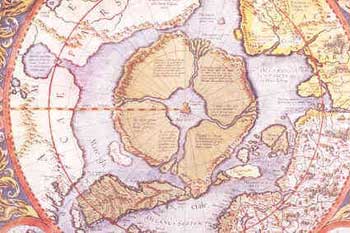
Concerning
Cook
In
1905, Cook had formed a friendship with John R. Bradley, a wealthy
man and a hunter with an adventurous spirit who was planning a hunting
expedition in the Great North. Cook managed to persuade Bradley
to help with the funding of his expedition to the North Pole. Cook
had had experience of polar wintering in the Antarctic. Of German
extraction and born in 1865, he studied medicine and it was as a
doctor that he had brilliantly taken part in the rescue of the Belgica
mission led by Adrien de Gerlache at the time of the first and extremely
severe Antarctic wintering (1898-99). Roald Amundsen, the future
discoverer of the South Pole, and a great admirer of Cook, was also
part of the mission. Dr Cook had also accompanied Peary during his
1901 expedition.
On 3 July 1907, the ship "Bradley" sailed north. During
one of the stopovers, Cook met Knud Rasmussen, an Eskimo half-breed,
and a future explorer of the Polar Regions. After several mishaps
on the way, the Bradley reached Annoatok, where Cook unloaded his
equipment. He then proposed to Franke, his fellow crew member, to
accompany him to the Pole, which the latter accepted. Annoatok (=
Anoritooq 78°33' N and 72°30' W) became Cook's base for
his explorations and for his final assault on the Pole. The preparation
of the equipment was sophisticated. Cook had designed a special
sledge on which a tent could be easily mounted. Despite its ease
of assembly, because it was cold, Cook preferred an igloo made of
snow which ensured perfect protection.
The arguments about Cook's lack of preparation and the numerical
inadequacy of his high-tech team would seem to be unfounded when
it is known how intelligently and efficiently he dealt with the
technical and logistical problems relating to his ski-trek.
With the help of his brother, he had developed a light, resistant
and efficient model sledge. But it was in Annoatok that he built
his sledges, using wood selected by his brother. The spacing between
the runners had been standardised so that the sledges could proceed
along the same ruts.
The pemmican had also been prepared in Annoatok by Cook and Franke
according to a technique that he had perfected. This enabled him
to avoid the inconvenience suffered by the Peary team that made
some of the participants ill, including Dr. Goodsell himself. The
cause was too much formaldehyde used as a preservative, as well
as the accidental presence of fragments of glass; also the excess
water become ice which they had to nibble with their teeth because
they did not have enough fuel to thaw it out (JG,
see below the Bibliography). 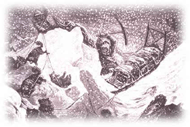
Like Amundsen, Cook went ahead of his sledge on skis. This reduced
the load to be pulled by the dogs, and allowed him to circumvent
patches of open water on more recently re-frozen ice and thus to
spend less time waiting. Indeed, the weight of a walker in boots
or on his sledge is less distributed than on skis. The sledges could
be converted into boats, thanks to a tarpaulin tailored for this
purpose. Certain Eskimos of Peary's team walked on the recently
formed ice on their hands, knees and toes; a method of distributing
their weight over six points.
In
the USA, opinions were divided as to Cook's prospects of success
with his ski-trek to the Pole.
Two typical examples: on the one hand, Bridgemann, Secretary of
the Peary Arctic Club and Managing Director of the Standard Union
newspaper, said: "He can't". On the other hand, Bradley,
who had seen Cook at work and who had provided him with all the
necessary equipment, was confident in his success.
These
two points of view were the reflection of entirely different strategic
visions.
The Peary
clan conceived the expedition with his own ship as a forward base,
with many participants and large resources "in the American
way", while Cook had based his project on what I would call
the "necessary but sufficient" minimum, well studied,
solid, efficient and consequently lighter in terms of equipment,
but also lighter in the number of team members and therefore in
terms of food and fuel. Nevertheless,
at the end of February 1908, Cook set out with 11 sledges and a
total of 103 dogs. The high number of dogs of any Arctic expedition
of the time was determined by several factors:
- 1) The loads
included food and other things, to be left in stockpiles that
would be used on the return journey.
- 2) Many dogs
became incurably lame or sick.
- 3) On the
return journey, as the weight of the loads (food) had decreased,
the initial number of dogs was no longer necessary and they were
put down to feed the remaining dogs and the participants in the
ski-trek (JG, p 117-127, see below
the Bibliography).
The
idea was to hunt whatever they might encounter on Ellesmere Island
(bear, seal, walrus, musk ox, hare, and so on) before reaching the
Glacial Arctic Ocean.
It
was at this time that Cook parted company from Franke, who returned
to Annoatok. Later, by 05 May, all the Eskimos who had set out with
Cook had returned to the base; all except two of them, Etukishuk
and Ahwelah, whom Cook intended to take with him to the Pole. Meanwhile,
Peary had arrived in the region and, without being unduly concerned
with scruples, he "confiscated" the provisions of food
that Cook had constituted in Annoatok for his return and for possible
wintering, as well as his marketable stocks of fox fur.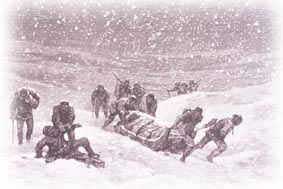
One year later, Harry Whitney, whom Peary had installed in Cook's
hut, saw the latter arriving with his two companions, famished,
emaciated and extremely dirty. Cook had shoulder-length hair, like
an Eskimo. A technical detail: in the extreme cold, Eskimos used
to pull their hair down across the opening of their hoods, which
reduced the impact of the wind a little.
Cook had
undertaken his ski-trek on the Arctic Ocean from Cape Svartevoeg
on the northern coast of Axel Heiberg Island, and, according to
him, had reached the Pole. While returning, he found pack ice that
was far too fragmented. Left with no choice, he altered his route
and had had to winter on the northern coast of Devon Island, at
Cape Sparbo, under extremely harsh conditions: "One of the
most extraordinary exploits of polar history", according to
Jean Malaurie (JM, see below the
Bibliography).
Cook's
Return: comment and impressions
Money
did not appear to have been among Cook's primary concerns. On his
return, he asked James Gordon Bennett, owner of the New York Herald,
for only $3,000 for his article, instead of the tens of thousands
of dollars that he would have been able to demand. There were numerous
"character references". Among these, a Dr. Dedrick, Peary's
doctor, the explorer Scott, also a certain Dillon Wallace, who described
Cook as a man of extreme reliability. And John Bradley: "There
is no man on Earth who surpasses Cook in courage, in quality of
judgement or in perseverance". Roald Amundsen, indefeasible
in his friendship for Cook, was no less admiring. And finally Franke,
who had been rubbing shoulders with him for months, thought that
Cook was a man of his word, who proved what he said.
However,
Professor McMillan summarised the situation by saying: "The
credibility of Cook's report is built on his personality as a human
being, together with the internal and external coherence of the
report itself". (RB, see
below the Bibliography) 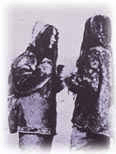
Fourteen
years earlier, after having left the ship "Fram", drifting
as a prisoner of the pack ice, Nansen and Johansen had arrived on
8 April 1895 at 86° 13' 6 (that is to say 419 km from the Pole);
nobody had got so close before (FN,
p 226, see below the Bibliography). A position at which Nansen
said: "I'm convinced that we will not be able to reach
the Pole or its immediate vicinity: the pack ice is too broken (my
stress) and our dogs too weak!" However Cook always
read the accounts of the other explorers most attentively, and none
of them consequently suggested that Cook could have taken Nansen's
story as a starting point and then extrapolated from it. However
this sentence is precisely the opposite of the description made
by Cook on his return. Which could encourage the idea that Cook
might have got even closer to the Pole than Nansen. It should be
said in passing, that Admiral Byrd had, on the contrary, found the
pack ice close to the Pole to be extremely hummocky. The same applies
to Amundsen.
Malaurie
emphasised that Cook described the Pole "exactly as it was",
i.e. increasingly unified pack ice beyond 88°. Which was not
always the case: from one year to the next, the "orography"
of the pack ice varied considerably.
One thing is for sure; Cook could not have known in advance whether
the Pole was a mountain, a volcano, a mere island, a group of hummocks,
a sea... An argument against Cook is the "testimony" of
his two Inuits, Etukishuk and Ahwelah who, according to Peary's
report as presented to the press by the Peary Arctic Club (sic!!),
had declared that Cook had never been to the Pole and that furthermore
he had never been out of sight of land.
Dr Goodsell, Peary's expedition doctor, attests that Peary had denied
him permission to question Cook's two companions and that Peary
had himself set up a "committee" to question them (JG,
see below our Bibliography). The "Tripod"
Website adds that George Borup, delegated to question them,
did not have command of the Inuit language, and that Henson, the
only person apart from Goodsell who spoke that language, was not
present even though he signed the report; and that, finally, Peary
was not present even though he also signed it.
Knud Rasmussen (an Eskimo half-breed) did not meet Cook's two companions,
but questioned (1909) many Eskimos (parents and friends) who had
discussed matters with them and they had confirmed every detail
of Cook's story. Conversely, Sir Wally Herbert (WH,
p 332-8, see below our Bibliography) mentioned the fact that
he was well acquainted with a certain Inuutersuaq, who had been
in direct contact with Etukishuk and Ahwelah. Inuutersuaq's testimony
was published by a somewhat tortuous route. The account, made in
the Inuit language, was translated into Danish, then adapted and
translated into English, and published in 1984.
Critics
commented that Sir Wally had an interest in the matter and was therefore
not an impartial judge (RB, p 760,
see below our Bibliography). Perhaps, but he could at least
provide valid evidence due to the fact that he was the first man,
on 5 April 1969, to reach the North Pole by dog-sled.
Concerning
Peary
Conversely,
what Peary had to gain and especially not to lose, if he had arrived
at the Pole first, was quite clearly glory, for which he had a constant
need - like bread; then the fact of not having to repay, among other
things, the $ 4,000 (2002 value = $ 80,000) that he would owe to
the New York Times newspaper if he were not the first to arrive
at the Pole, in addition to an enormous loss of earnings, and finally
the successful outcome of more than ten years of polar exploration
and vain attempts conducted with the courage, perseverance and willpower
of somebody who had made this his reason for living.
Peary considered that the 1909 expedition would be his now or never.
He had previously conducted several expeditions, with the initial
objective of reconnoitring the extreme north of Greenland, and then
reaching the North Pole. 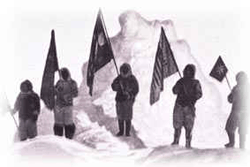
Initially, he made a ski-trek within Greenland (West coast)
in 1886.
In 1891-1892, he wintered in the Gulf of Inglefield
(close to the current Siorapaluk 77°48' N-70°41' W) with,
among others, Peary, Matt Henson (Peary's devoted black servant),
Eivind Astrup, John Verhoeff, and Cook as doctor. The objective
was to penetrate the continental glacier as far as possible towards
the Northeast. After a 2,000-km journey by dog-sledge, he reached
Independence Bay. He claimed that Greenland was an island. He was
right, but for the wrong reason. He discovered what he took to be
a channel, which in fact does not exist; and Greenland continued
for a further 150km towards the East.
There then followed several expeditions essentially focusing on
the North Pole objective.
Successively, he explored the ice cap of Ellesmere Island and prepared
a series of stockpiles along his probable route to the Pole.
On
6 March 1806,
he ventured on to the pack ice of the Arctic Ocean and after wintering
on Roosevelt trapped in the ice at Cape Sheridan, he left land at
Moss Point for a ski-trek towards the Pole accompanied inter alia
by Bartlett, Henson, Marvin and Clark. Twenty days later, he was
stopped short by an enormous channel of open water (84°38' N).
He progressed 10 km per leg. April 2, the five white men of the
ski-trek had returned to land and he kept with him only Henson and
the Eskimos.
He said that he then managed to cross the channel and headed north,
where he might have reached the latitude of 87°06' N on
April 21. Peary then turned around and reached land at Cape
Newmeyer, after what Hall calculated to be a 907-km journey (taking
into account the drift of the pack ice in particular) and carried
out in 26 days, whereas Clark had also taken 26 days to reach the
same Cape Newmeyer after a journey of only 181km (TH,
p 289, see below our Bibliography). Which, in the Peary's case,
would make 35km per day. That seems unlikely. The calculations and
arguments about Peary's speed in all account for 75 pages of Hall's
book.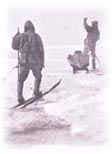
By way of comparison: Peary had achieved 10km per day before the
episode of the wide channel. Average distances covered per day by
the various great Arctic travellers for whom we have the quantified
data are, for Parry 9.2km, Nansen 9.6km, and Cagni 15km; and for
McClintock, the great particularly fast specialist of the period:
21km (TH, see below our Bibliography).
In 1908-1909, the weak point in Peary's story was
his "logbook" and what stems from it, i.e. once more,
the impossibility of having covered such daily distances. The nub
of the controversy revolves around the observed position, 87°47'
N. What was it ?
Peary
(see RP chapters XXIII to XXXIV,
see below our Biliography) left Cape Columbia on 1 March 1909
with a train of sleds and participants, including Henson, Bartlett,
Dr. Goodsell, McMillan and several Eskimos. Soon, he was stopped
for 6 days, until the 11th, by a very wide channel at latitude 83°53'
N. He waited for Marvin and Borup and their men who were to bring
the fuel that they needed. They finally arrived. Goodsell returned
to land, and then Borup. Twelve men, ten sledges and twenty-four
dogs remained. Marvin, in turn, returned to land with a sledge and
17 dogs, but not before taking an observed position: 86°38'
N. Peary did not take the position himself so as not to tire his
eyes and in order to have measurements that were independent of
him. Marvin was thought to have disappeared in a channel, but according
to another version, his two Eskimos might have murdered him.
A few
days later, Bartlett, a ship's captain and thus thoroughly experienced,
took that observed position of 87°47' N where the camp was located
that was to bear his name.
Bartlett returned with some regret. Peary was once again with Henson,
four Eskimos, five sledges, and forty dogs.
So let's now see what happened between latitude 87°47' N (Camp
Bartlett) and the extreme latitude they "reached", namely
89°57' N, Camp Jessup at the Pole itself. 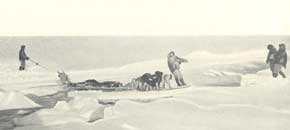
The outward journey represented 130 nautical miles; Peary circulated
around the Pole for 41 terrestrial miles according to some and for
36 (or 31' = minutes of degree of latitude = nautical = marine miles)
according to others. Return journey: 130 nautical miles. Total:
130' + 130' + 31' = 291' ; 291' x 1,852 m. = 539km in 8 days. Let's
not add to that the usual 30% for the detours, but only 20%: an
assumption favourable to Peary, namely 647km or an average of 81km
per day for eight days; with in particular 130' or 145km of distance
per day for two days. Let's not forget that Peary had no toes left
but his two little ones, that he was wearing heavy furs and finally,
that he was 53 years old, which at the time was relatively old for
a polar explorer.
It
is true that during the Finmark Race (a Norwegian kind of 1,000-km
Itidarod that I followed for 600km) the speed was 200km per day.
But, firstly, it was a question of a 6-day race with one day of
rest in the middle; secondly, it was a question of a course where
speeds of 12.5kph could be constant for 16 hours (4 hours of race
+ 1 hour of rest times 4 equals 20 hours; plus four more hours of
rest), for it was a question of specially selected dogs that had
been extensively trained for months on end.
Sir Wally
Herbert wrote to me (09/12/2001) on this subject: "Sure,
there are always going to be a few travellers who will claim to
have covered a comparable distance in one day; but it is pointless
to compare one's best day's travel against Peary's average".
Another
explorer, Shackleton, covered 25,2' or 46,7km (measured by a wheel-counter)
in a single day; with a dog-sledge carrying only a 32-kg load, with
the wind in his back, with a sail, on the terra firma of the Antarctic
continent and in addition while descending from altitude. Therefore
without a heavy load, without hummocks, and without channels. That
was his record!
The
remainder of the return journey, from Camp Bartlett to Cape Columbia,
was 413', from which one subtracts the 130' of the last stages to
give us 283'. Let's add 30% for detours; namely 368' converted into
kilometres makes 682; that is to say 57km per day for 12 days as
compared to 81km per day for 8 days. Peary's critics, and they are
numerous, did not fail to emphasise that the speed records were
shattered from the moment when Bartlett left the team, leaving Peary
only the Eskimos, who were incapable of assessing positions and
distances, and Henson, his faithful black servant. Those same critics
also underlined the fact that, after the return journey, he practically
never spoke to Henson again. 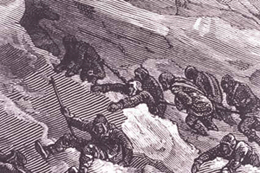
H. Lewin,
in his book quoted by Hall (TH,
p 77, see below our Bibliography) as being "a very intelligently
written book" (?), came up with the following figures: the
distance as the crow flies from the Pole to Cape Columbia was 475
terrestrial miles, plus 100 from Cape Columbia to Cape Sheridan
(Roosevelt), plus 10% for detours and 30% for the drift, in 18 legs
comes to 37,5 miles per leg. I admit that I have looked at these
calculations every which way and have arrived at no conclusive result.
The trouble is that certain authors successively use terrestrial
miles (1609m) or nautical miles (1852m) or "route miles"
(the distance actually covered) without clearly specifying when.
Hayes
(GH, p 148, see below our Bibliography)
emphasised the fact that Peary, in his public statement, had left
out the 30% that are the minutes of latitude that he should have
added to his theoretical route. This omission could have made his
story a little less incredible by decreasing the distance allegedly
covered. Curiously, Peary admitted before 1906 to having added 25%
to his theoretical route.
Peary,
according to his own declarations before the USA Congressional Commission,
had not taken any observed positions, except for the famous 87°
47', but only several estimated positions, and had managed to get
back to his starting base, whereas he had had only a compass, the
variation of which could obviously not have been known to him. In
this connection, Dr. John Goodsell confirmed to have noted several
times that the positions mentioned with precision by Peary were
in fact only estimated positions, and not observed positions. Goodsell,
who made scrupulously detailed notes, did not mention any "scientific"
observation (meaning "with a sextant") to determine the
position (JG, see below our Bibliography).
The defined
course of Peary's ski-trek is most disquieting. That on such a long
route, with the drift of the pack ice and the obligation at times
to make major detours (because of hummocks and leads), the outward
and the return journey should be completely rectilinear appears
surprising yet again.
Elements
of logistics and organisation
The
organisation of a day involved unloading the sledges, preparing
food, if only to heat it (although…!) since on arrival at the
end of a leg, the ambient temperature was found to be -30 or -40°
C. The dogs also had to be fed. An igloo had to be built (taking
about one hour), sleeping bags had to be unpacked, and clothes had
to be brushed to remove the white frost from them (one hour). Also
the position, observed or estimated, had to be taken. Undoubtedly
some item of clothing, a boot, a sledge, or a dog harness would
have to be repaired; and, of course, one had to sleep. As an example,
on 4 March 2002 (see
this page in our website) it took three hours for Alain Hubert
and Dixie Dansercoer to strike camp (without any dogs!).
To
cover a distance over the pack ice involved steering the dogs in
a particular direction, and therefore often reorienting them, which
took time. The hummocks (pressure ridges) had to be got over, the
"leads" circumvented (the special term for the channels
of open water) or one had to wait until they froze again, and the
drift and errors of navigation had to be compensated for. With the
dogs harnessed according to the Inuit method, i.e. in a fan (as
opposed to with the Norwegian or Continental Canadian method of
dogs in pairs and in line), every two hours the braid of the ten
to fifteen line-leashes that attached the dogs to the sledge had
to be disentangled, which wasted a quarter of an hour. The explanation
from an Inuit of the fan method, which at first seemed to me to
be absurd, is the following. On the continental glacier there is
a real danger of deep crevasses and on the pack ice, there is the
danger of leads. Dogs attached in Indian file can be dragged one
after the other into these two pitfalls. With the fan method, each
dog is independent of the other. If one dog falls, it does not involve
the others.
In short,
one does not find conditions for travelling on the pack ice, unless
exceptionally, for more than 20 to 25km per day.
Important
reflections about observed or estimated positions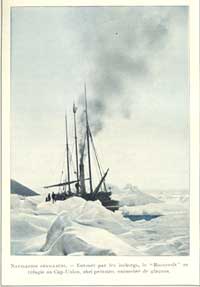
It is not unreasonable to wonder about the way in which Cook and
Peary could go out and back using only a compass, without knowing
its variation.
It is true that the wind, and consequently the orientation of the
sastrugis, make it possible to keep to an approximate course (WH,
p 271, see below our Bibliography). This is one of the first
remarks that are made about the pack ice; whereas vast surfaces
of it can rotate and the orientation of the sastrugis can be somewhat
disturbed as a result. Herbert also emphasised the fact that the
wind does not always blow in the same direction.
With
a visible sun and a watch, and provided one keeps to the same meridian,
it is possible to aim for the true north. One learns that in the
boy-scouts at 9-12 years, without even having an ordinary watch.
It is obvious that, at our latitudes, the danger of inadvertently
changing the meridian is small, while at very high latitudes, the
danger is indeed great. For various degrees of latitude, the number
of minutes corresponding to the lateral displacement of a nautical
mile would, at 82°N, be 7 minutes; at 85°N, 11'; at 88°N,
28' and at 89°N, 57' of longitude is practically a degree (TH,
p 36, see below our Bibliography). The uninformed reader should
realise that at the Pole (at 90°N) one can go around the world
(twice 180°) in a few seconds!
One
can only be astonished (an understatement) by the fact that Peary
declared during his hearing before this same Congressional Commission
"that he considered that taking observations of longitude was
a waste of time " (TH-HN, p
260, see below our Bibliography).
Fortunately for him, the National Geographic Society, after a superficial
examination and biased in favour of the "evidence" provided
by its protégé Peary, sanctioned him as conqueror
of the Pole. The same thing occurred with the same result with another
of the Society's protégés, Admiral Byrd, the "first",
in 1926, to have flown over the North Pole. (DR,
p 257 to 272 in a chapter entitled "Götterdämmerung",
Twilight of the Gods, see below our Bibliography).
A
possible scenario, but one which would have required iron discipline,
as well as favourable conditions of sunlight, would have to have
been the following. Leaving on a known meridian, it would have to
have been possible to aim North by using a simple watch. The foregoing
would have been more or less valid if there had not been the drift
of the pack ice (at that time) several miles to the East, and, near
the coast, to the West. The daily observed position (sun permitting),
even by the meridian alone, could have specified and confirmed the
estimated positions.
It
should be said in passing, that the www.geo-orbit.org
website indicates "Compass Unusable" for the zone
in which Cook and Peary found themselves for their ski-treks towards
the Pole, and even more so as the Magnetic Pole at that time was
10° further to the East. In a more extended zone, including
the regions as far as Hudson Bay and the entire North of Greenland,
the website stipulates: "Compass Erratic";
data of which Cook and Peary were apparently unaware. Cook based
his position on the fact that, setting out from the meridian of
the Magnetic Pole, it was normal for his compass to point to the
South all the time. Finally, nocturnal observation of the Pole Star
was of course impossible during the permanent daylight period.
The defined
course of Peary's ski-trek is most disquieting from this point of
view. That on such a long route, with the drift of the pack ice
and the obligation at times to make major detours (because of hummocks
and leads), the outward and the return journey should be completely
"rectilinear" appears more than surprising.
Conclusion
Peary
regarded the North Pole as his personal mission, and to think that
somebody, who furthermore had been under his orders, could undertake
and succeed in an expedition on what, for him, was his prerogative
or even his private property, was more than he could bear.
From
the books quoted further on, one can deduce from the facts and from
his statements, or in any case one forms the impression, that Peary
was an arrogant, cynical human being, full of self-importance, and
fundamentally without scruples. Whereas Cook appeared very simple,
not concerned with money, but propelled by his passion for his subject
: the Polar Regions and their inhabitants.
Both
presented photographs taken in studios or faked (Cook: the Peak
of Mount McKinley). Both discovered a non-existent land in the middle
of the Arctic Ocean (Crocker for Peary; Bradley for Cook). Peary
described a non-existent strait. Peary had confiscated the Inuit
meteorites that he brought back from Cape York, and then sold them
for $40,000 (now approximately $800,000). Cook apparently tried
to publish a dictionary of a South American dialect in his own name
whereas it had been compiled and written by Tierra del Fuego missionaries.
Of course, none of this constitutes good character references.
But what concerns us is the initial question: which of them, if
either, got to the Pole ?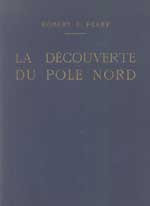
Peary's fatal mistake was to have attacked Cook, without beating
about the bush, from the very first news of his success. The friends
and supporters of the one or the other have, from that moment and
in the manner of detectives, scrutinised the details of the explorer's
life and the private lives of Cook and Peary. The steps taken to
tarnish Cook's reputation took twists and turns worthy of a whodunit.
Witnesses (false) were bought, etc.
In spite of the sympathy which one might have for Cook as a human
being, one can only deplore the internal inconsistencies of his
notes and the poverty of the data relating to the manner that he
had to taken his position. Which does not, reasonably, enable us
to believe that he could have reached the Pole, unless by chance,
which would be illusory. The aberrant speeds allegedly achieved
by Peary both in 1909 as well as in 1906 make his stories unbelievable.
Especially as each time he had only the Eskimos and Henson with
him. Peary could not have reached the Pole.
Sir Wally Herbert wrote in the same letter: "I could
of course go on and on. But what's the point. No one will listen
if they don't want to hear, and for every single polar traveller
who really knows what he is talking about there are always a hundred
more armchair-explorers who are prepared to write what the public
wants to hear and to perpetuate the myths".
The
material is so abundant and the information so often contradictory
that the temptation that has to be resisted is to make a synopsis
of the opinions, rather than to try to form one of ones own.
To conclude,
the 10,000 or 20,000 items of information found only in the works
of the short bibliography below, which are impossible to summarise,
do not offer the certainty that the one - Cook- or the other - Peary-
(or both) reached the North Pole. This certainty indeed appears
to be a matter of faith. The only winners of this controversy were
the organs of the press, which, by reporting its interminable episodes,
often threw oil on the fire for the sole purpose of providing copy.
Without
being biased, if it is easy to prove that Peary did not reach the
North Pole, on the other hand, nobody can prove that Cook, for his
part, did.
--------------------------------------------------------------------------------------------------------------------------
SOME BIBLIOGRAPHICAL LANDMARKS
(Preceded by the shortened reference)
(RB)
: Bryce, Robert M., Cook & Peary, The Polar Controversy,
Resolved. Mechanicsburg, PA: Stackpole Books, 1997.
(FC) : Cook, Frederick A., My Attainment of the Pole. New
York: Cooper Square Press, 2001
(JG) : Goodsell, J. W., On Polar Trails. Austin, Texas: Eakin
Publishers, 1983.
(TH) : Hall, Thomas F., Has the North Pole Been Discovered
?. Boston: R. G. Badger, 1917.
(GH) : Hayes, Gordon J., Robert Edwin Peary. London: Grant
Richards & Humphrey Toulmin, 1929.
(WH) : Herbert, Wally, The Noose of Laurels. London: Hodder&
Stoughton, 1989.
(JM) : Malaurie, Jean, Ultima Thulé. Paris: Editions
du Chêne, 2000
(FN) : Nansen, Fridtjof, Vers le pôle. Paris: Flammarion,
(RP) : Peary, Robert E., The North Pole. New York: Cooper
Square Press, 2001.
(DR) : Rawlins, Dennis, Peary at the North Pole: Fact or
Fiction ? Washington-New York: Robert B. Luce,1973.
---------------------------------------------------------------------------------------------------
|
About
the author of this story
Jacques TJacques Theodor, who was born in 1926, initially
pursued a career in the textile industry, then in electronics;
then in public works, then deep-sea filming (cameraman; director)
before belatedly (when 37 years old) deciding on a career
in biological research.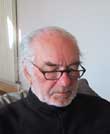
A
researcher at the National Scientific Research Centre in comparative
immunology and later in pharmacology, he then concentrated
on scientific methodology.
In
parallel he was always, if not a sportsman within the usual
meaning of the word, nevertheless a great adventure enthusiast.
A speleologist when 11 years old, he made this his favourite
pastime. Meanwhile, he moved to underground diving (1948)
then to deep-sea diving.
In
1950, he won the bronze medal in the national (B) pentathlon
championships. In 1953, he broke the world record for underground
depth (Pierre Saint Martin abyss).
His
competence in polar matters is modest. Nevertheless, he made
a 2,300-km journey by sledge, including 600km with an Inuit
group on the Baffin Island pack ice, also 5,000 to 6,000km
of Nordic skiing, including the last degree towards the North
Pole (1997). Which has enabled him to separate the wheat from
the chaff in the accounts of the two rivals and their historians.
|
|












